Performance Analysis and Optimization of Switch Device for VLF Communication Synchronous Tuning System Based on Coupled Inductors
Abstract
:1. Introduction
2. Fundamental Architecture of a Switching Device
3. Performance Analysis of a Switching Device
3.1. The Impact of the Coupling Coefficient and Resistance Caused by Coupling Inductance Loss
3.2. The Impact of Internal Parameters on the Performance of IGBT
4. Adaptive Input Impedance Optimization Algorithm Based on Variable Capacitor (VC-ADIO)
4.1. Calculation Method for Variable Capacitor
4.2. Basic Process of Adaptive Input Impedance Optimization Algorithm Based on Variable Capacitor
5. Simulation and Experiment
6. Conclusions
Author Contributions
Funding
Data Availability Statement
Conflicts of Interest
References
- Wen, W.F. Research on Miniaturized HF Ultra-HF Wideband Antenna and Matching Network. Master’s Thesis, University of Electronic Science and Technology, Chengdu, China, 25 August 2024. [Google Scholar]
- Dan, D. Research on Wideband and Miniaturization of Low-Frequency Antenna. Master’s Thesis, University of Electronic Science and Technology, Chengdu, China, 2014. [Google Scholar]
- Liu, C.; Jiang, H.; Huang, J.H. Very Low Frequency Communication; Haichao Publishing House: Beijing, China, 2008; p. 122. [Google Scholar]
- Fan, C.; Cao, L. Communication Principle; National Defense Industry Press: Beijing, China, 2006; p. 242. [Google Scholar]
- Watt, A.D. VLF Radio Engineering; Pergamon: Bergama, Turkey, 1967. [Google Scholar]
- Wolff, H. High-Speed Frequency-Shift Keying of LF and VLF Radio Circuits. Ire Trans. Commun. Syst. 1957, 5, 29–42. [Google Scholar] [CrossRef]
- Dong, Y.; Jiang, Y.; Zhang, J. VLF emission system based on MSK spectrum frequency characteristic study. J. Radio Sci. J. 2010, 3, 6. [Google Scholar]
- Simpson, T.; Roberts, M.; Berg, E. Developing a broadband circuit model for the Cutler VLF antenna. In Proceedings of the Antennas & Propagation Society International Symposium, Boston, MA, USA, 8–13 July 2001. [Google Scholar] [CrossRef]
- Berg, E.C.; Roberts, M.A.; Simpson, T.L. Dual-frequency distortion predictions for the Cutler VLF array. Aerosp. Electron. Syst. IEEE Trans. 2003, 39, 1016–1034. [Google Scholar] [CrossRef]
- Zhang, W.; Zheng, L.; Dong, Y. Very low frequency transmitting antenna dynamic tuning bandwidth study. J. Ship Electr. Eng. 2009, 10, 4. [Google Scholar] [CrossRef]
- Dong, Y.; Liu, C. Dynamic tuning VLF antenna performance. J. Nav. Eng. Univ. 2010, 22, 98–102. [Google Scholar]
- Jin, G.; Dong, Y. VLF emission system synchronous tuning study. J. Mod. Electron. Technol. 2011, 34, 3. [Google Scholar]
- Jin, G.; Dong, Y. MSK synchronization based on FPGA tuning study. Microcomput. Inf. 2012, 3, 2. [Google Scholar]
- Ling, J.; Dong, Y.; Xu, H. Very low frequency transmitting system performance simulation. J. Radio Commun. Technol. 2015, 5, 74–76. [Google Scholar] [CrossRef]
- Johannessen, P.R. Automatic Tuning of High-Q Antenna For VLF FSK Transmission. IEEE Trans. Commun. Syst. 1964, 12, 110–115. [Google Scholar] [CrossRef]
- Hartley, H. Electronic Broad Banding of VLF/LF Antennas for FSK Radio Communication. IEEE Trans. Commun. Technol. 1971, 19, 555–561. [Google Scholar] [CrossRef]
- Firman, C.M. Synchronized Turn-Off of VLF Antennae: US19720222194. U.S. Patent 3904966A, 18 June 2024. [Google Scholar]
- Johannessen, P.R.; Planckp, V. Antenna Tuning System and Method. U.S. Patent 4689803, 1 September 1987. [Google Scholar]
- Johnson, L.J. Magnetic Amplifier Switchfor AutomaticTuning of VIF Transmitting Antenna. U.S. Patent 5034697, 23 July 1991. [Google Scholar]
- Ivan, W.; Ivan, W.; Guy, B. Switchable Inductor for Strong Currents and Antenna Tuning Circuit Provided with at Least One Such Inductance: FR19920005722. U.S. Patent FR2691308A1, 5 May 2024. [Google Scholar]
- Zu, Y.; Li, W.; Lv, Y. Fundamentals of Circuit Analysis, 2nd ed.; Publishing House of Electronics Industry: Beijing, China, 2014. [Google Scholar]
- Volke, A.; Hornkamp, M. IGBT Modules: Technology, Drivers and Applications; Infineon Technologies AG: Munich, Germany, 2012. [Google Scholar]
- Khanna, V.K. Insulated Gate Bipolar Transistor IGBT Theory and Design; Wiley-IEEE Press: Hoboken, NJ, USA, 2003. [Google Scholar] [CrossRef]
- Mao, H.-K.; Wang, Y.; Wu, X.; Su, F.-W. Simulation Study of 4H-SiC Trench Insulated Gate Bipolar Transistor with Low Turn-Off Loss. Micromachines 2019, 10, 815. [Google Scholar] [CrossRef] [PubMed]
- Deng, J.; Li, H.; Ruan, Q. A Differential Complementary Variable Capacitor for VCO. U.S. Patent CN117277968A, 22 December 2023. [Google Scholar]
- Zhang, D.; Hong, J. A Vacuum Capacitor that Can Change the Capacity of the Capacitor. U.S. Patent CN215955107U, 4 March 2022. [Google Scholar]
- Jin, P.; Li, Z.; Guo, Y. An Online Debugging Method for Automatic Resonance Regulation of a Variable-Capacitance Bidirectional CLLC Resonant Converter. U.S. Patent CN117375425A, 9 January 2024. [Google Scholar]
- Jie, H.; Gao, S.-P.; Zhao, Z.; Fan, F.; Sasongko, F.; Gupta, A.K.; See, K.Y. VNA-Based Fixture Adapters for Wideband Accurate Impedance Extraction of Single-Phase EMI Filtering Chokes. IEEE Trans. Ind. Electron. 2023, 70, 7821–7831. [Google Scholar] [CrossRef]
- Alonso, J.M.; Martinez, G.; Perdigao, M.; do Prado, R.N. A Systematic Approach to Modeling Complex Magnetic Devices Using SPICE: Application to Variable Inductors. IEEE Trans. Power Electron. 2016, 31, 7735–7746. [Google Scholar] [CrossRef]
- Perdigao, M.S.; Alonso, J.M.; Costa, M.A.D.; Saraiva, E. A variable inductor MATLAB/Simulink behavioral model for application in magnetically-controlled electronic ballasts. In Proceedings of the International Symposium on Power Electronics, Ischia, Italy, 11–13 June 2008. [Google Scholar] [CrossRef]



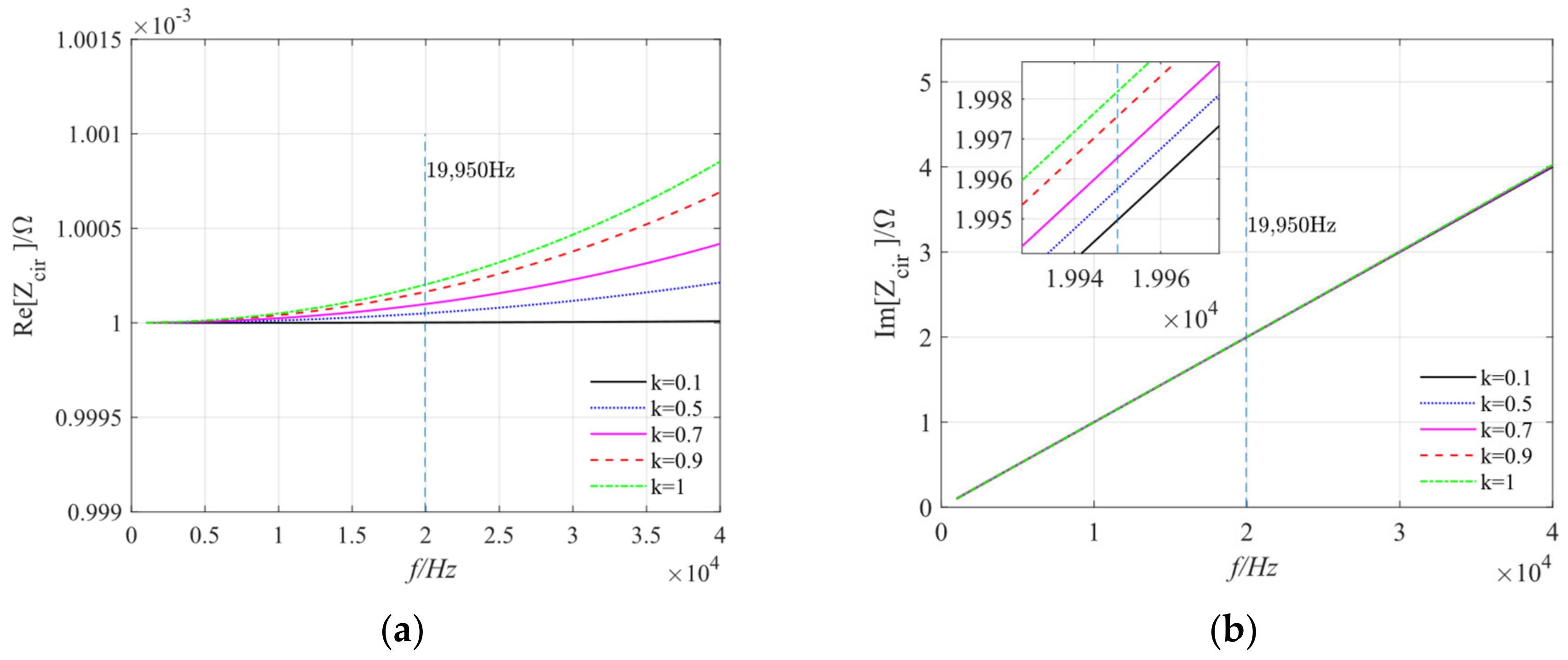


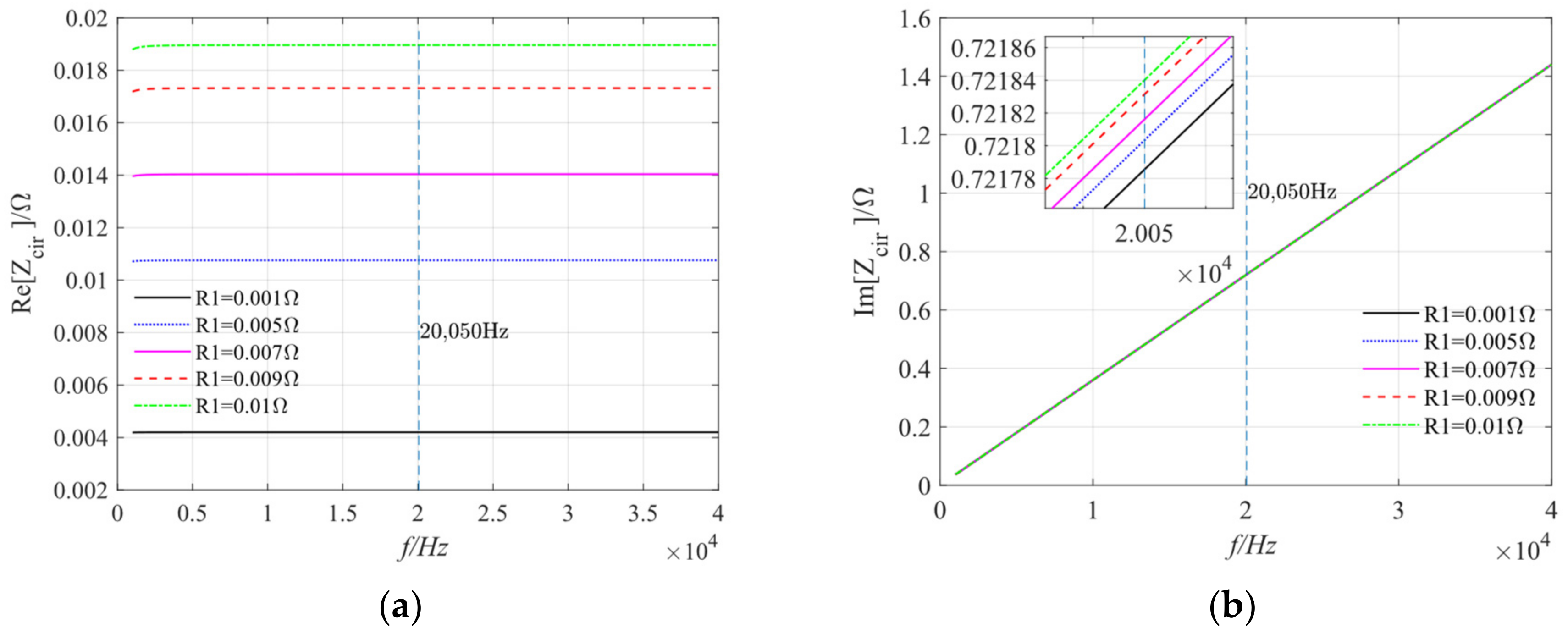

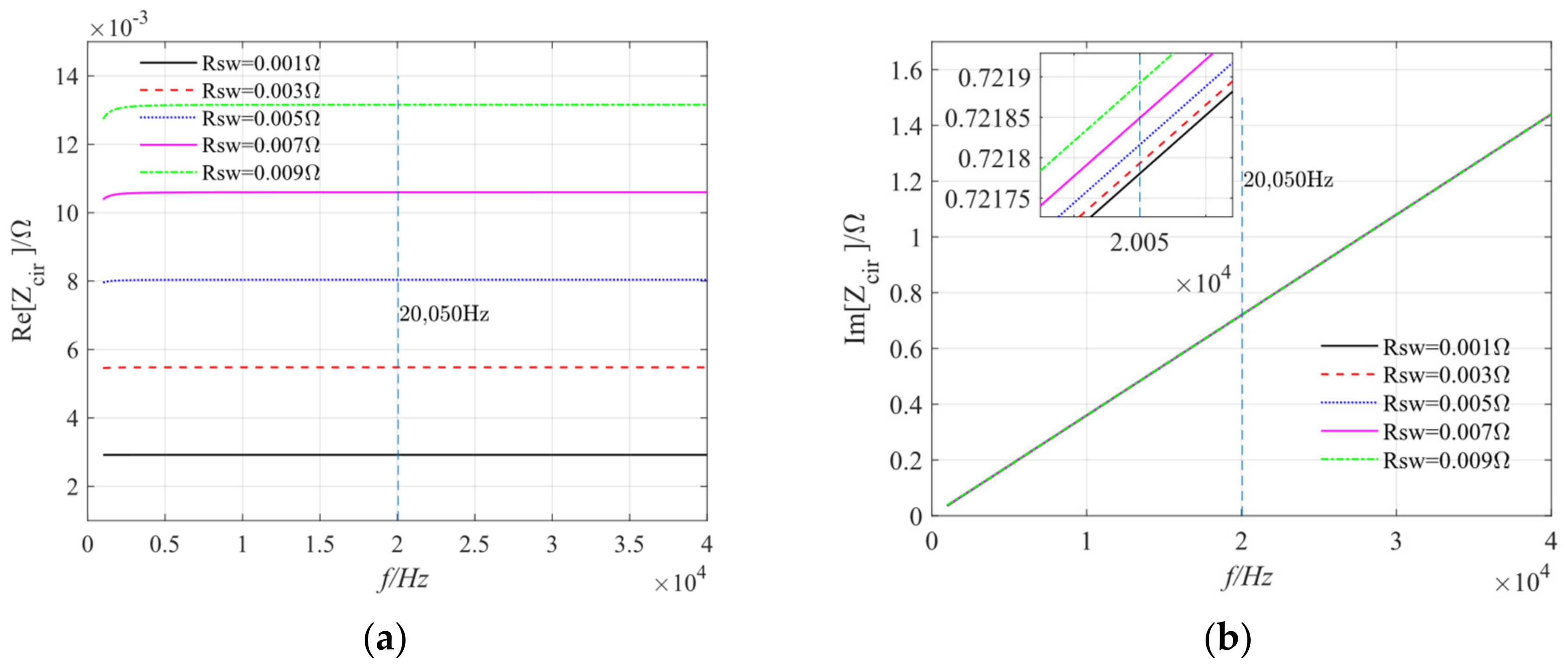

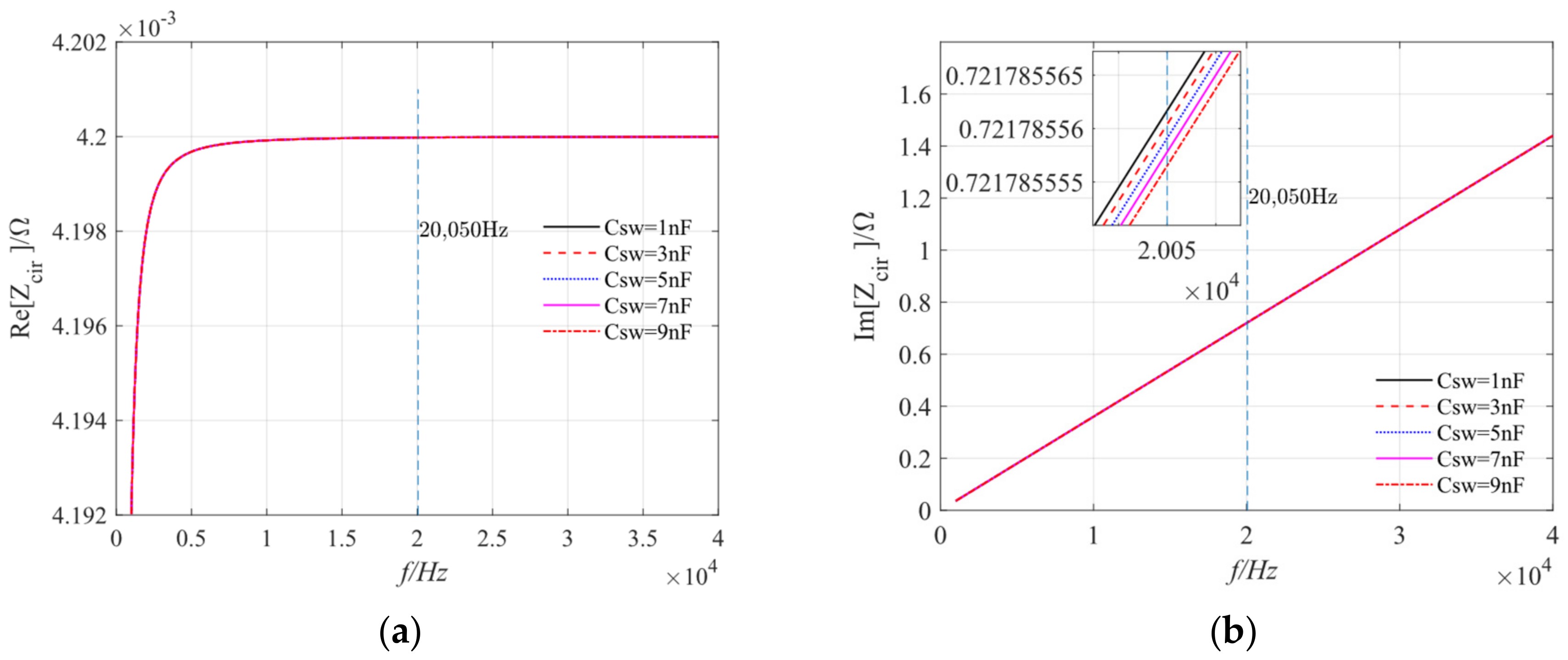



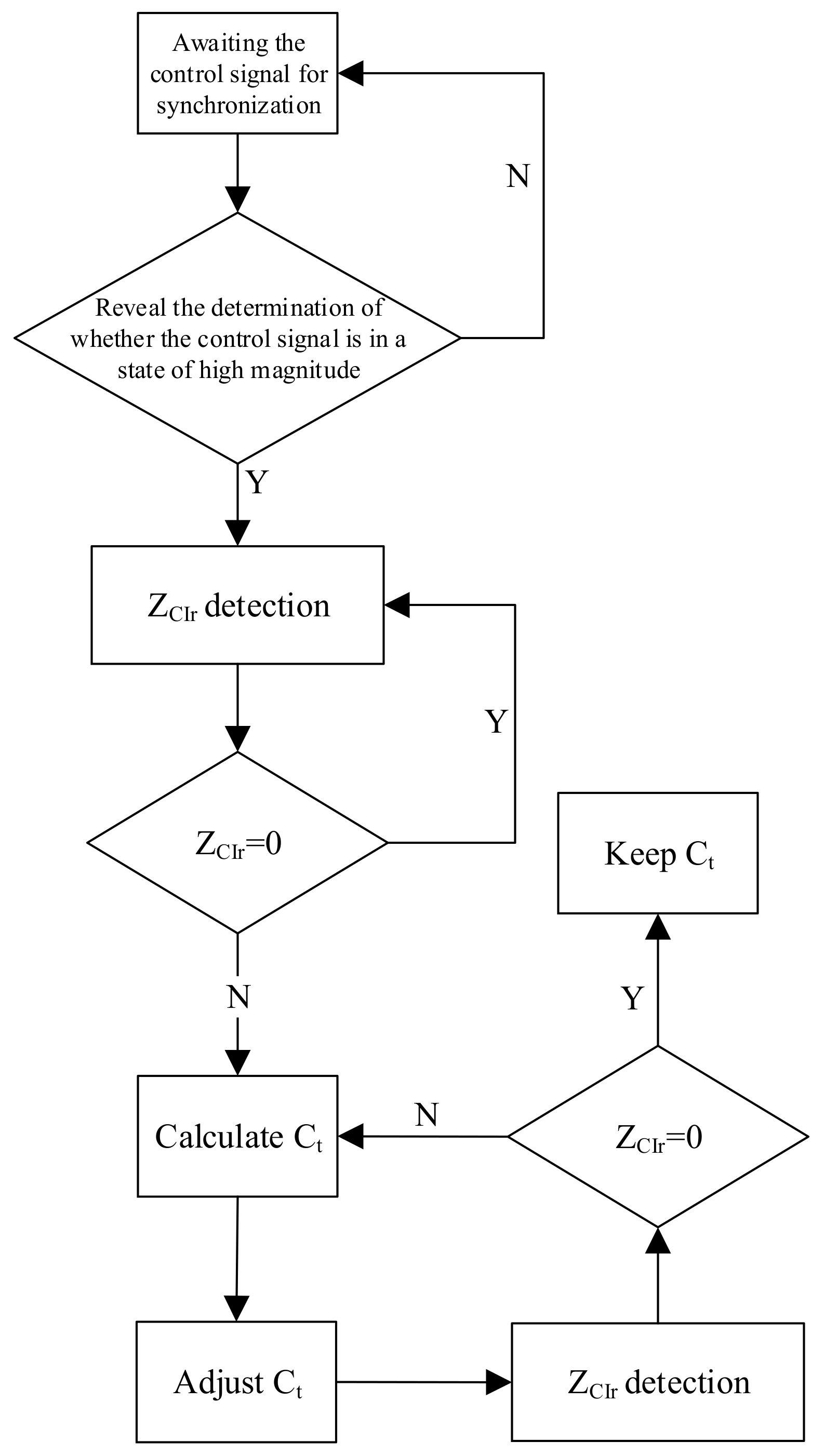
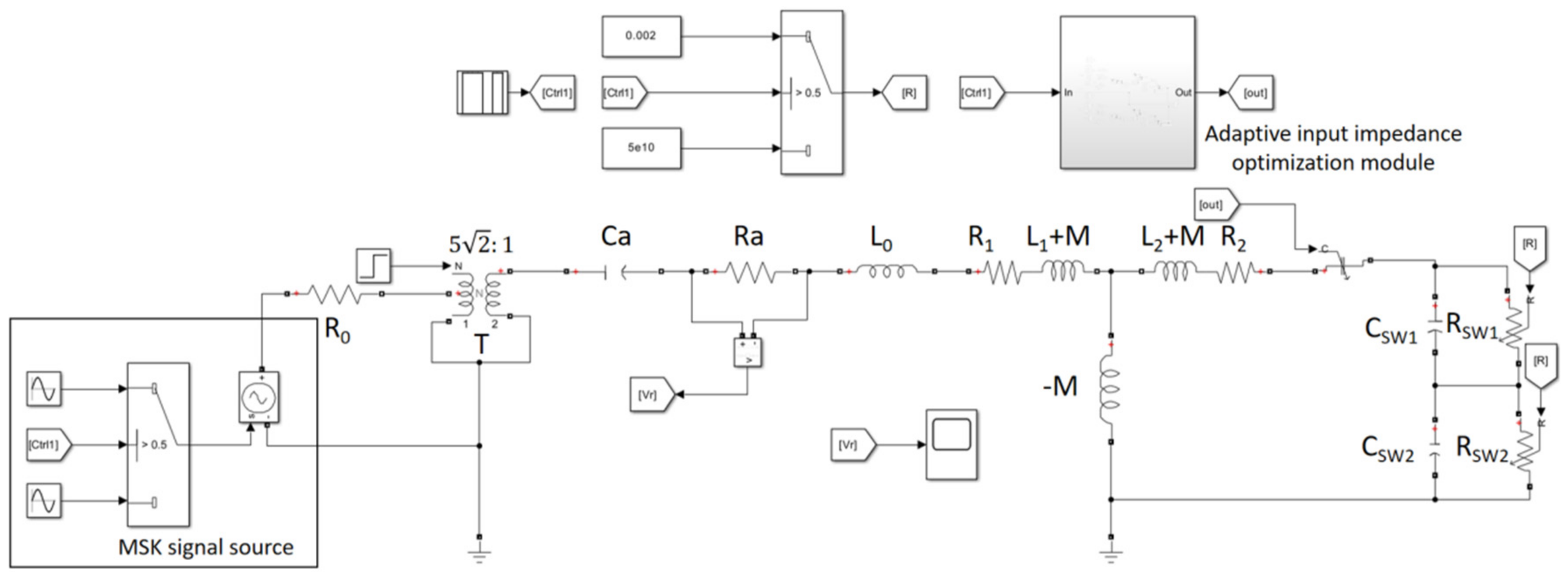

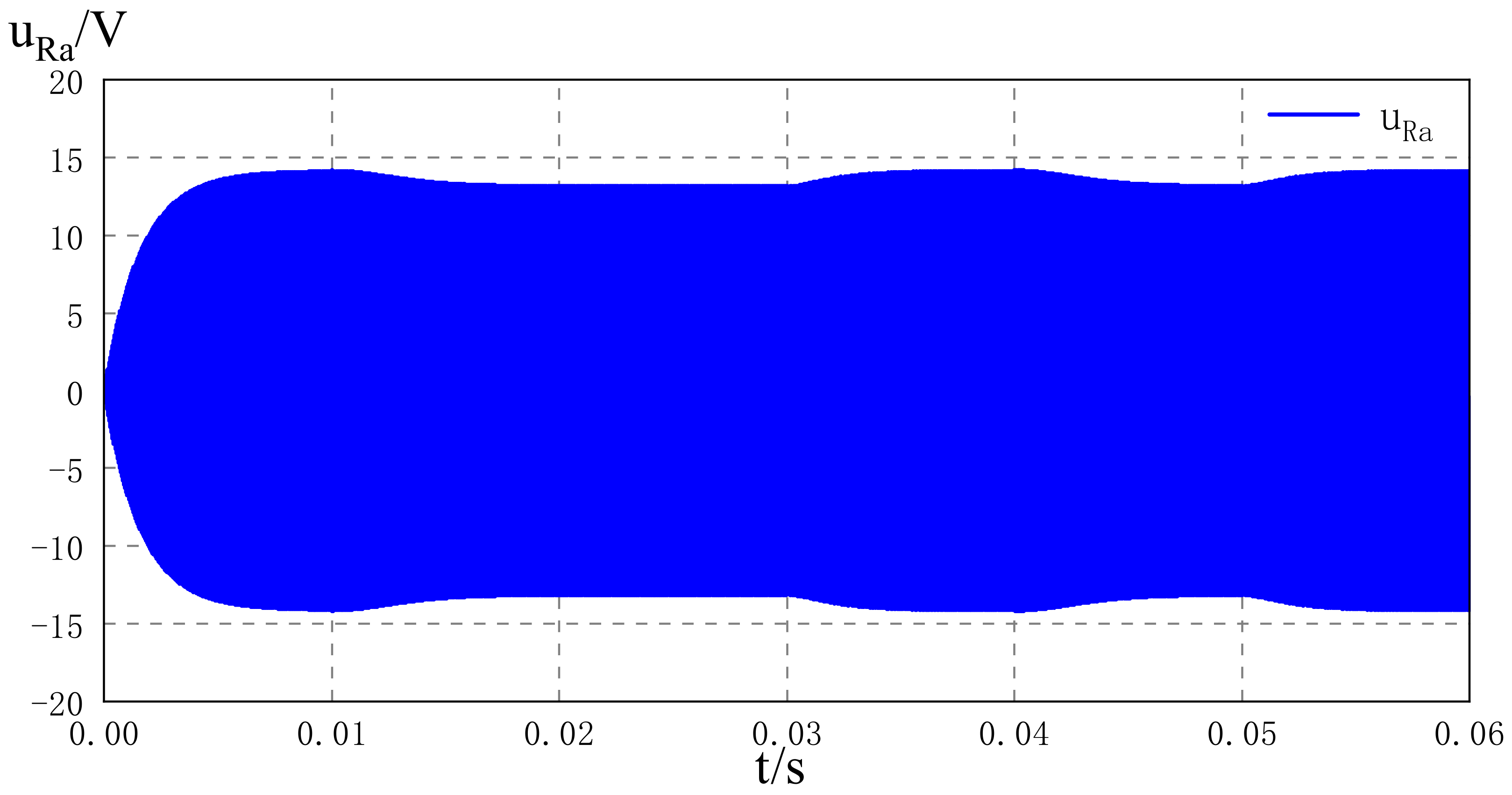



Disclaimer/Publisher’s Note: The statements, opinions and data contained in all publications are solely those of the individual author(s) and contributor(s) and not of MDPI and/or the editor(s). MDPI and/or the editor(s) disclaim responsibility for any injury to people or property resulting from any ideas, methods, instructions or products referred to in the content. |
© 2024 by the authors. Licensee MDPI, Basel, Switzerland. This article is an open access article distributed under the terms and conditions of the Creative Commons Attribution (CC BY) license (https://creativecommons.org/licenses/by/4.0/).
Share and Cite
Wei, S.; Xie, X.; Zuo, H. Performance Analysis and Optimization of Switch Device for VLF Communication Synchronous Tuning System Based on Coupled Inductors. Electronics 2024, 13, 3457. https://doi.org/10.3390/electronics13173457
Wei S, Xie X, Zuo H. Performance Analysis and Optimization of Switch Device for VLF Communication Synchronous Tuning System Based on Coupled Inductors. Electronics. 2024; 13(17):3457. https://doi.org/10.3390/electronics13173457
Chicago/Turabian StyleWei, Shize, Xu Xie, and Hao Zuo. 2024. "Performance Analysis and Optimization of Switch Device for VLF Communication Synchronous Tuning System Based on Coupled Inductors" Electronics 13, no. 17: 3457. https://doi.org/10.3390/electronics13173457





